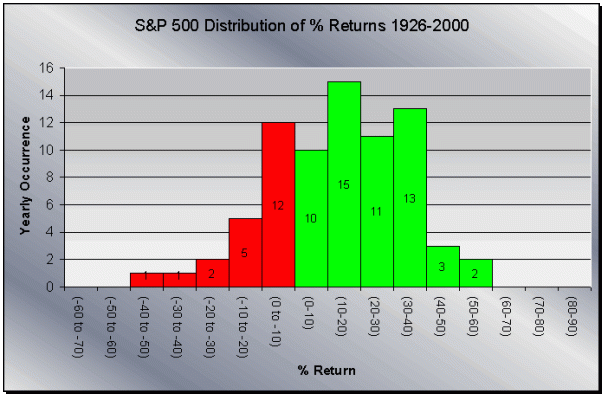jIMOh
Thinks s/he gets paid by the post
I see a portfolio of 55% stocks and 45% bonds gives an average return of 8.5% with a standard deviation of 9.9%.
I am trying to "interpret" standard deviation and set expectations.
Does this mean most returns are between -1.4% and 18.4%? (8.5-9.9 and 8.5+9.9)? I don't think so... but asking to be sure.
Does this mean most returns are between [8.5- (9.9%*8.5)] and [8.5+(9.9%*8.5)] which means most returns are between 7.65% and 9.34%?
Then how often is someone getting "most returns"- is that 66% of the time, 75% of the time or whatever range on the bell curve?
Its been 15 years since I took statistics, any help is appreciated. Thx
I am trying to "interpret" standard deviation and set expectations.
Does this mean most returns are between -1.4% and 18.4%? (8.5-9.9 and 8.5+9.9)? I don't think so... but asking to be sure.
Does this mean most returns are between [8.5- (9.9%*8.5)] and [8.5+(9.9%*8.5)] which means most returns are between 7.65% and 9.34%?
Then how often is someone getting "most returns"- is that 66% of the time, 75% of the time or whatever range on the bell curve?
Its been 15 years since I took statistics, any help is appreciated. Thx


 .
.